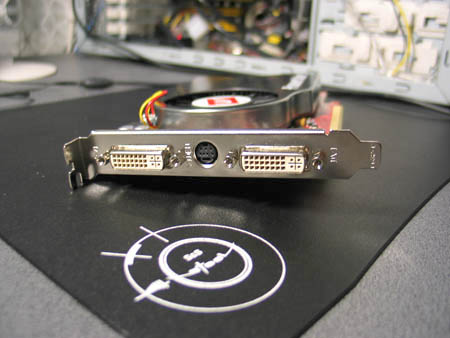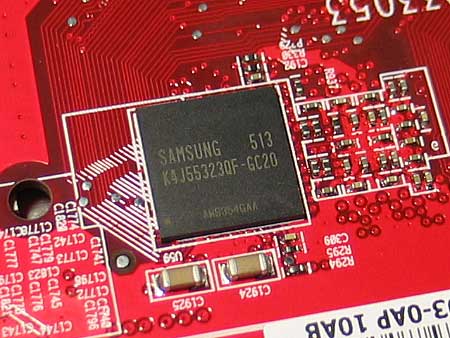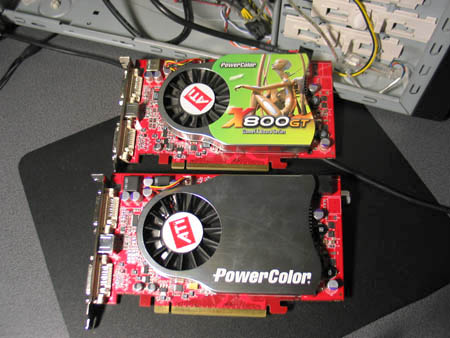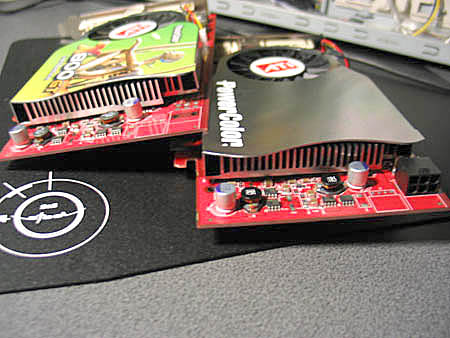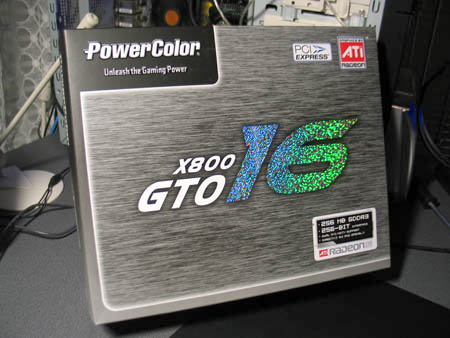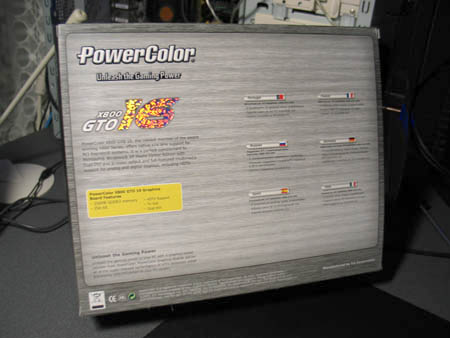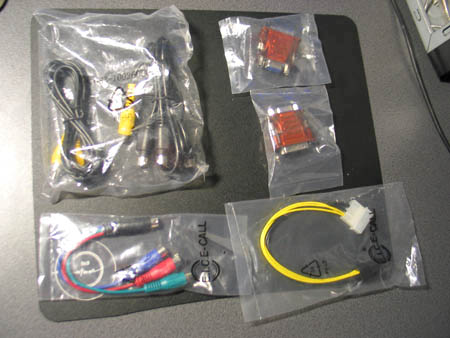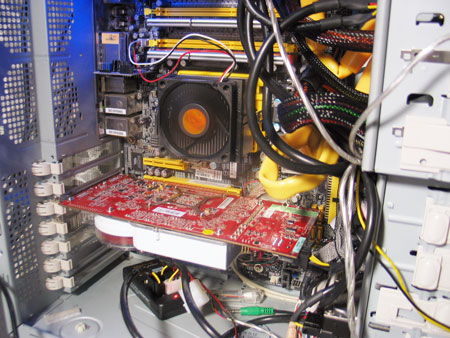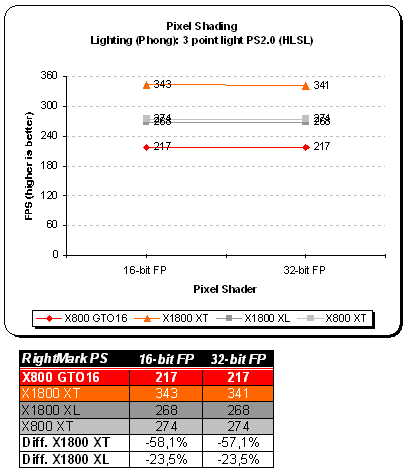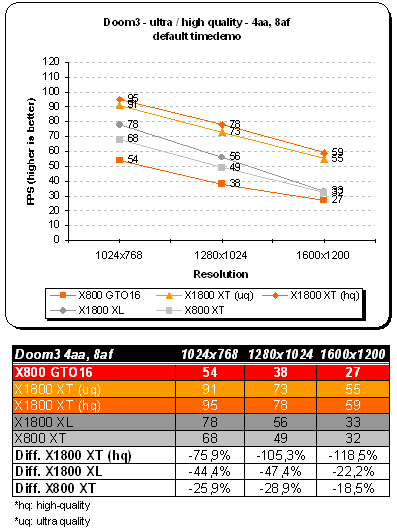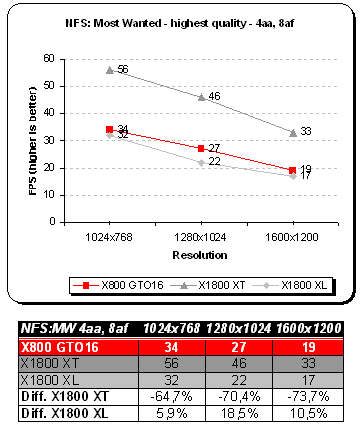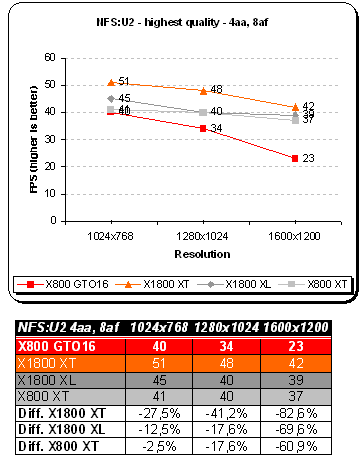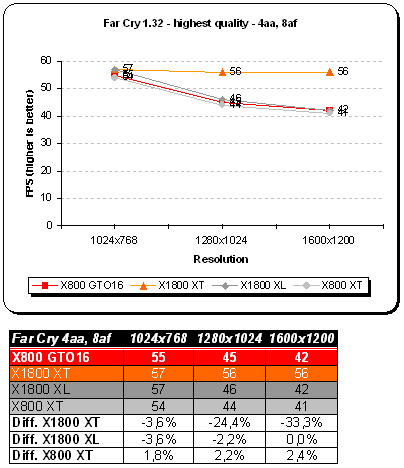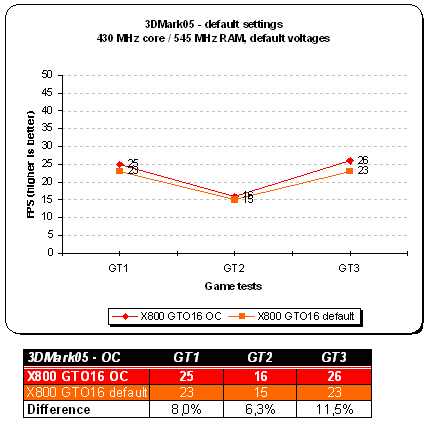To make the long story short, it would’t be wise of me not to recommend this card. Everyone who is seeking a cheap upgrade yet wants decent performance should give PowerColor X800 GTO16 a considerate and detailed look. Whether you’re a gamer, enthusiast or graphics editor you should not look beyond what Tul offers with this rebranded XL video card. This board is packed with features (including dual DVI links) and great performance. At $179 USD it’s simply a steal. The only gripe I have is lack of VIVO capability — only TV out.
Introduction – the power of 16
A bit of a history lesson before I start. If you want to get familiar with RADEON X800 GT, it’s based on one of the three cores: R420, R423 or R480. Those scrap silicons with two non working quads had made a lot of fuss in the market — some where fully operational X850 GPUs. The obvious differences were clock speeds and number of pixel pipelines which put this card in the middle-end sector.
The power of 16 for $180 USD has finally arrived. Given the fact RADEON X800 XL is still priced at $200 and over, Tul had decided to throw in another X800 card into the mix. We’ve seen a lot of RADEON GT’s on the market from various manufacturers. A while ago I reviewed a PowerColor X800 GT which was based on non-moddable R480 core. A week later, Sapphire figured it would be nice to release a board where you could unlock the additional quad. That was the RADEON X800 GTO² with its 12 pipelines. It didn’t take long before w1zzard wrote an article on X800 GTO to X850 XT mod.
If you’d like more information on X800 SKU, please visit this Beyond3D thread.
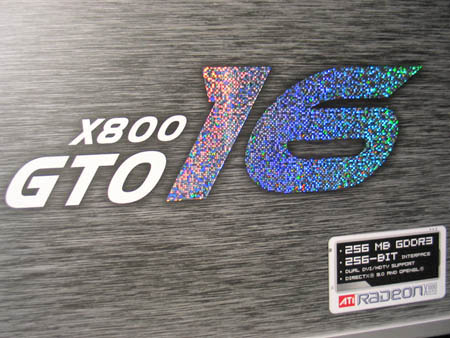
The card I’m displaying off today is last years generation based on ATi’s RADEON X800 XL (R430) — both core and design wise. The price you have to pay however is not $599. It’s not even $399, $299 or $199. You can get a rebranded X800 XL for as low as $179. So you’re scratching your head and thinking where is the catch?
PowerColor is a consumer brand focused on providing cutting-edge graphics card products to retail customers. Our goal for the Tul brand is to be the industry’s number one provider of technology product solutions. Our goal for the PowerColor brand is to be the world’s number one brand of graphics cards. PowerColor is in effect owned by Tul Corporation, however the brands are operated independently of each other.
VPU Specifications
The card I’m displaying off today is last years generation based on ATi’s RADEON X800 XL (R430) — both core and design wise. The price you have to pay however is not $599. It’s not even $399, $299 or $199. You can get a rebranded X800 XL for as low as $179. So you’re scratching your head and thinking where is the catch? There is no major catch, but there are few differences. First of all Tul needed to cut the cost of the board. With that in mind they decided to exclude VIVO capabilities from this card. Another difference is slower memory though that does not affect performance at all. The obvious and most important change was product name. The XL was rebranded with GTO16 instead. Price tag was lowered as well.
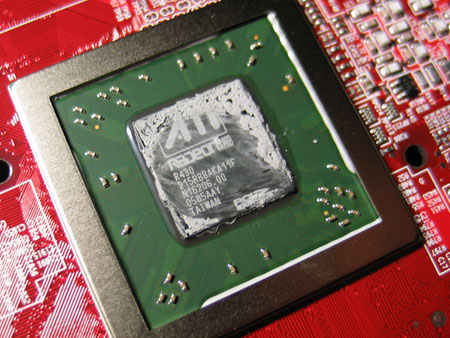
When you look at the specifications of the PowerColor X800 GTO16, they are the same as with XL. There are no architectural differences. GTO16 model is here to compete against 16 pixel pipeline GeForce 6800GT at a low price point.
| PowerColor | X800 GTO16 |
X800 GT
|
X800 XL 512MB
|
| VPU (256-bit) | R430 |
R480
|
R430
|
| Chip Architecture | .13µ low-k (TSMC fab) |
.13µ low-k (TSMC fab)
|
.11µ (TSMC fab)
|
| Transistors | ~160 Million |
~160 Million
|
~160 Million
|
| Memory Architecture | 256-bit |
256-bit
|
256-bit
|
| Frame Buffer Size | 256 MB GDDR-3 |
256 MB GDDR-3
|
512 MB GDDR-3
|
| Pixel Pipelines | 16 |
8
|
16
|
| Vertex Pipelines | 6 |
6
|
6
|
| TMU(s) per Pipeline | 1 |
1
|
1
|
| Engine | SMARTSHADER HD |
SMARTSHADER HD
|
SMARTSHADER HD
|
| Bus Type | PCI-e 16x |
PCI-e 16x
|
PCI-e 16x
|
| Core Clock | 400 MHz |
475 MHz
|
400 MHz
|
| Memory Clock | 980 MHz DDR |
980 MHz DDR
|
980 MHz DDR
|
| RAMDACs | 2x 400 MHz DACs |
2x 400 MHz DACs
|
2x 400 MHz DACs
|
| Memory Bandwidth | 31.4 GB / sec |
31.4 GB / sec
|
31.4 GB / sec
|
| Pixel Fillrate | 6.4 GPixels / sec |
3.8 GPixels / sec
|
6.4 GPixels / sec
|
| Texel Fillrate | 6.4 GPixels / sec |
3.8 GTexels / sec
|
6.4 GPixels / sec
|
| DirectX Version | 9.0c |
9.0c
|
9.0c
|
| Pixel Shader | 2.0b |
2.0b
|
2.0b
|
| Vertex Shader | 2.0b |
2.0b
|
2.0
|
SMARTSHADER™ HD
- Support for Microsoft® DirectX® 9.0 programmable vertex and pixel shaders in hardware
- DirectX® 9.0 Vertex Shaders
- Vertex programs up to 65,280 instructions with flow control
- Single cycle trigonometric operations (SIN & COS)
- DirectX® 9.0 Extended Pixel Shaders
- Up to 1,536 instructions and 16textures per rendering pass
- 2nd generation F-buffer technology accelerates multi-pass pixel shader programs with unlimited instructions
- 32 temporary and constant registers
- Facing register for two-sided lighting
- 128-bit, 64-bit & 32-bit per pixel floating point color formats
- Multiple Render Target (MRT) support
- Complete feature set also supported in OpenGL® via extensions
SMOOTHVISION™ HD
- 2x/4x/6x Anti-Aliasing modes
- Sparse multi-sample algorithm with gamma correction, programmable sample patterns, and centroid sampling
- Lossless Color Compression (up to6:1)at all resolutions, including widescreen HDTV resolutions
- Temporal Anti-Aliasing
- 2x/4x/8x/16x Anisotropic Filtering modes
- Up to 128-tap texture filtering
- Adaptive algorithm with bilinear (performance) and trilinear (quality) options
3Dc™
- High quality 4:1 Normal Map Compression
- Works with any two-channel data format
HYPER Z™ HD
- 3-level Hierarchical Z-Buffer with Early Z Test
- Lossless Z-Buffer Compression (up to 48:1)
- Fast Z-Buffer Clear
- Z Cache optimized for real-time shadow rendering
- Optimized for performance at high display resolutions, including widescreen HDTV resolutions
VIDEOSHADER™ HD
- Seamless integration of pixel shaders with video in real time
- FULLSTREAM™ video de-blocking technology for Real, DivX, and WMV9 formats
- VIDEOSOAP™ noise removal filtering for captured video
- All-format DTV/HDTV decoding
- Adaptive Per-Pixel De-Interlacing and Frame Rate Conversion (temporal filtering)
DISPLAY FEATURES
- Dual integrated display controllers
- Dual integrated 10 bit per channel 400 MHz DACs
- Integrated 165 MHz TMDS transmitter (DVI 1.0 / HDMI compliant and HDCP ready)
- Integrated TV Output support up to 1024×768 resolution
- YPrPb component output for direct drive of HDTV displays†
- Single and dual link external TMDS transmitter support for high resolution and/or multi-monitor DVI configurations
- Compatible with ATI’s THEATER™ video decode and capture devices for VIVO (Video Input / Video Output) configurations on certain X800 graphic cards
ADDITIONAL FEATURES
- Windows® Logo Program compliant
- CATALYST™ Software Suite
In terms of feature set, there are no major differences from R300 / R350 GPUs, except for improved pixel / vertex shader instructions and additional map compression.
The Card
Playing with high-end X1K cards and looking back at the size of PowerColor X800 GTO16 is bringing back old memories of small PCI graphics adapters. Despite different generations, performance did not improve as far as overall changes in design. Sure, most top shelf cards wear fancy patented cooling systems or other flashy equippment, but that just adds to the price tag.
Let’s see a rather plain looking X800 GTO16 also known as RADEON X800 XL.

Bundle
In terms of package and bundle you’ll find a standard PowerColor box with accessories and software. If you’re looking for new games, you’ll be disappointed.
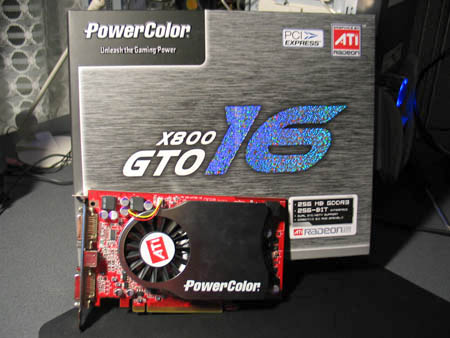
- S-Video Cable
- Composite Cable
- DVI-I Connector
- User’s Manual
- Driver CD
- CyberLink DVD Solutions
- PowerDVD 5
- PowerProducer 2 Gold DVD
- PowerDirector 3
- Power2Go 3
- Medi@show 2
- Pacific Fighters full game
Setup and Installation
All of our benchmarks were ran on Athlon64 3000+ clocked at 2.5GHz. I will stack PowerColor X800 GTO16 against various cards including high-end X1K GPUs. That includes PowerColor X1800 XT and HiS X1800 XL. Additionally I will throw in scores from reference ATi X800 XT. The table below shows test system configuration as well benchmarks used throughout the review.
| Components | – DFI NF4 Ultra-D – Athlon64 3000+ Venice – 2x256MB Corsair PC3200LLP (Dual Channel) – Thermaltake 520 Watt PSU – PowerColor X800 GTO16 – PowerColor X1800 XT 512 MB – HiS X1800 XL – ATi X800 XT |
| Software | – Windows XP SP2 – DirectX 9.0c – nForce4 6.53 drivers – CATALYST 5.11 |
| Synthetic Benchmarks | – 3DMark 2005 v1.2.0 – D3D Right Mark 1.0.5.0 beta 4 |
| Gaming Benchmarks | – F.E.A.R / ingame benchmark + Fraps – Half-Life 2 / custom d13c17 timedemo + Fraps – Doom 3 / default timedemo + Fraps – Quake 4 / custom timedemo – Serious Sam II / Fraps – NFS: Most Wanted / Fraps – NFS: Underground 2 / Fraps – Far Cry 1.32 / custom timedemo + Fraps |
| Notes | CPU clocked at 2.5GHz |
Putting the card in was a routine job. I haven’t experienced any problems during the installation process. Every step went smoothly and without a hitch. Below is a picture of the card; the other image shows X1800 XT for comparison.

PowerColor X800 GTO16 inside the case. Takes a lot less space than…
PowerColor X1800 XT
Synthetic Benchmarks
3DMark05
I’ve used Futuremark’s 3DMark 2005 to measure the actual throughput of PowerColor X800 GTO16 and compared it against the rest of the bunch, that is: X1800 XT, X1800 XL as well as reference X800 XT.

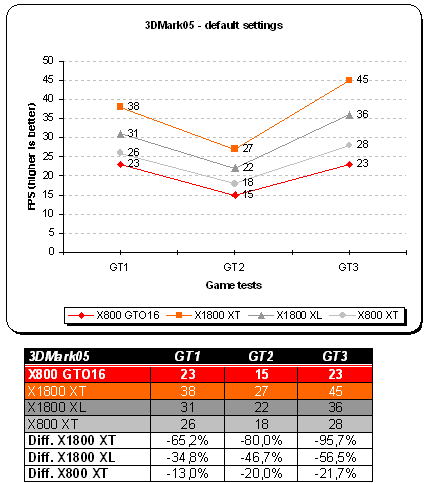
With D3D RightMark you will be able to get the following information about your video card:
- Features supported by your video card
- Pixel Fillrate and Texel Fillrate
- Pixel shader processing speed (all shader models)
- Vertex shader (geometry) processing speed (all shader models)
- Point sprites drawing speed
- HSR efficency

Although X800 GTO16 falls behind and grabs the last position, it is still performing very well compared to XT counterpart model.
F.E.A.R
On August 5th this year, VUGames have released F.E.A.R demo to the public. The game is being made over at Monolith Productions studio and should be out later this year. Since almost everyone has been waiting for this demo, I’ve decided to give it a shot and bench it with our X800 GTO16.
Texture caching in retail F.E.A.R has been improved a little. You won’t see a lot of chugging when abruptly turning around. Our benchmarking method was simple. I used default F.E.A.R benchmarking utility which nicely shows all effects and technology used throughout the game.
Game Overview
An unidentified paramilitary force infiltrates a multi-billion dollar aerospace compound, taking hostages but issuing no demands. The government responds by sending in special forces, but loses contact as an eerie signal interrupts radio communications. When the interference subsides moments later, the team has been obliterated. As part of a classified strike team created to deal with threats no one else can handle, your mission is simple: Eliminate the intruders at any cost. Determine the origin of the signal. And contain the crisis before it spirals out of control.
As you probably know, F.E.A.R uses a very sophisticated game engine (FEAR).
- Rendering
- FEAR is powered by a new flexible, extensible, and data driven DirectX 9 renderer that uses materials for rendering all visual objects. Each material associates an HLSL shader with artist-editable parameters used for rendering, including texture maps (normal, specular, emissive, etc.), colors, and numeric constants.
- Lightning Model
- FEAR features a unified Blinn-Phong per-pixel lighting model, allowing each light to generate both diffuse and specular lighting consistently across all solid objects in the environment. The lighting pipeline uses the following passes:
- Emissive: The emissive pass allows objects to display a glow effect and establishes the depth buffer to improve performance.
- Lighting: The lighting pass renders each light, first by generating shadows and then by applying the lighting onto any pixels that are visible and not shadowed.
- Translucency: The translucent pass blends all translucent objects into the scene using back to front sorting.
- FEAR features a unified Blinn-Phong per-pixel lighting model, allowing each light to generate both diffuse and specular lighting consistently across all solid objects in the environment. The lighting pipeline uses the following passes:
- Visual Effects
- FEAR features a new optimized, data driven effects system that allows for the creation of key-framed effects that can be comprised of dynamic lights, particle systems, models, and sounds. Examples of the effects that can be created using this system include weapon muzzle flashes, explosions, footsteps, fire, snow, steam, smoke, dust, and debris.
- Sample Lights
- FEAR’s lighting model is very flexible and allows developers to easily add new lights. Existing lights include:
- Point Light: The point light is a single point that emits light equally in all directions.
- Spotlight: Similar to a flashlight, the spotlight projects light within a specified field of view. The spotlight can also use a texture to tint the color of the lighting on a per pixel basis.
- Cube Projector: Similar to the point light, the cube projector uses a cubic texture to tint each lit pixel.
- Directional Light: This lighting is emitted from a rectangular plane and is used to simulate directional lights like sunlight.
- Point Fill: Although similar to the point light, the point fill is an efficient option because it does not utilize specular lighting or cast shadows.
- FEAR’s lighting model is very flexible and allows developers to easily add new lights. Existing lights include:
A more detailed overview of other F.E.A.R technologies can be found over at Touchdown Entertainment. These include: Havok Physics Engine and Modeling / Animations System.
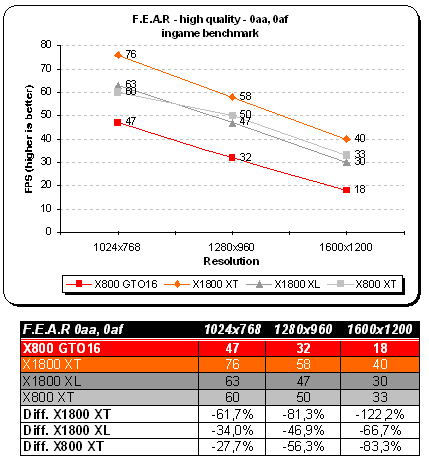
Half-Life 2
We all love Half-Life 2 and we all want best performance out of our hardware. This has to be one of the most graphic demanding games currently on the market. Half-Life 2 is built around Source engine which utilizes a very wide range of DirectX 8 / 9 special effects. Those include:
- Diffuse / specular bump mapping
- Dynamic soft shadows
- Localized / global valumetric fog
- Dynamic refraction
- High Level-of-Detail (LOD)
Note that users with DirectX 7 and older hardware (NVIDIA MX series for example) will not be able to enjoy the above effects. Let’s see what PowerColor X800 GTO16 is made of.
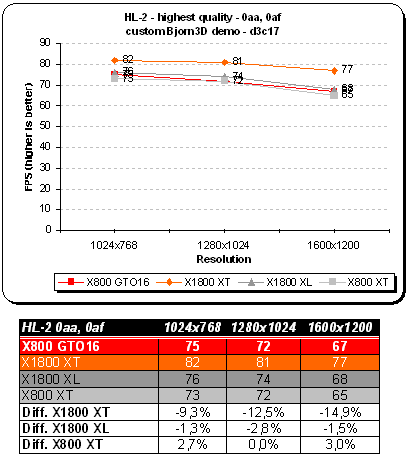

Doom 3
Now that we are past Doom 3s release, some gamers have been left with a bit of disappointment. Main reason is Half-Life 2 and its Source engine which really showed a vast amount of potential and scalability.
Although this game needs no introduction, I will go over some of the game features and technology behind Doom 3. It took the guys at id Software over four years to complete this project. Lead programmer, John Carmack spent an awful lot of time designing the game engine, but his hard work paid off — to some extent since this is first title which houses Doom 3 engine.
Let’s look at some of the engine tech features which are present in Doom 3:
- Unified lightning and shadowing engine
- Dynamic per-pixel lightning
- Stencil shadowing
- Specular lightning
- Realistic bumpmapping
- Dynamic and ambient six-channel audio
However you look at it, Carmack’s lightning engine is the essence of Doom 3. With OpenGL being the primary API, shaders have been put to a heavy use in order to create the realisticly looking environment. Instead of using lightmaps the game engine now processes all shadows in real-time. This technique is called stencil shadowing which can accurately shadow other objects in the scene. There are disadvantage to this method however:
- Requires a lot of fillrate
- Fast CPU is needed for shadow calculations
- Inability to render soft shadows
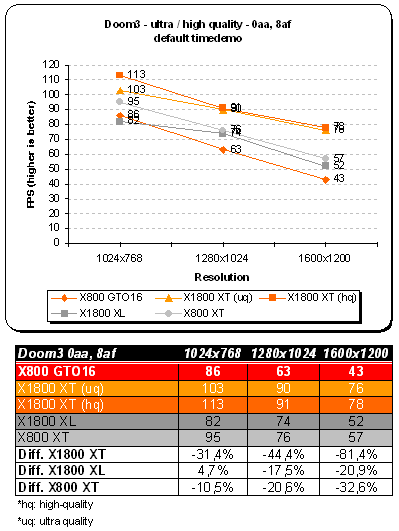
The ATI Radeon® X1800 has massive gains in OpenGL when 4X Anti-aliasing is enabled. Increases include:
* Doom 3 performance improvement of up to 38%
* Quake 4 performance improvement of up to 60%
* Older OpenGL titles such as Quake 3, Arena, and Wolfenstein: Enemy Territory, have performance improvements of up to 50%
The ATI Radeon® X1300 has a performance improvement of 10-15% in Quake 4.
The Vertex Shader has performance improvement of 3-5% across multiple products.
Although I wasn’t able to test older driver running X1K cards, performance in Doom 3 seems top notch. With 1024×768 Doom 3 runs at 103 FPS (Ultra Quality) and 113 FPS (High Quality). Scores narrow down between those two quality modes when going into 1280×1024 and 1600×1200. Ultra Quality on PowerColor X1800 XT is definitely a worthy step if you want to play with maximum ingame settings. For obvious reasons (256MB) X1800 XL and X800 XT did not like the highest mode therefore scores were not included.
Quake 4
This is another good title worth looking at. With success of Quake 3, id Software decided (after few years) it would be proper to have a sequel. Designed over at Raven Software’s farm, Q4 features rich single player as well as intensive and popular multiplayer mode.
It uses Doom 3 engine so you should be familiar with available effects. In any case, I listed them below
- Unified lightning and shadowing engine
- Dynamic per-pixel lightning
- Stencil shadowing
- Specular lightning
- Realistic bumpmapping
- Dynamic and ambient six-channel audio
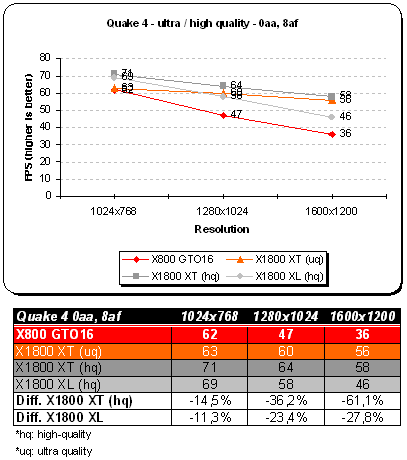
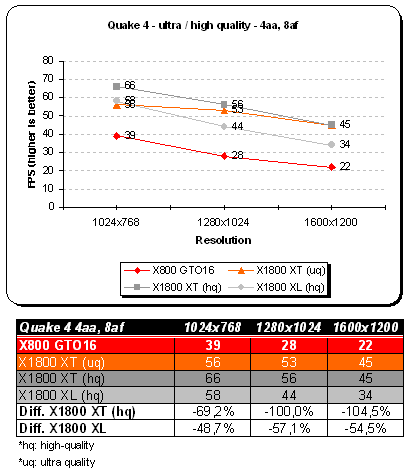
Serious Sam II
A highly anticipated sequel from Croteam has arrived. The madness continues as Sam runs around destroying anything that stands in his way. The environment looks great though level design could have used some more work. Enemies are bigger and there is plenty of action going on. Obviously the rendering engine went through a major redesign. As with previous Sam titles it features OpenGL 3D API which has undergone a full transition.
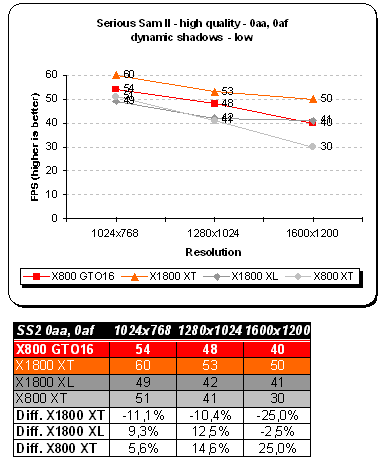
Need For Speed: Most Wanted
We have quite a few sequels in this review and this is another one, this time from Electronic Arts. If you’ve played NFS Hot Pursuit you know what I’m talking about. There are a lot of ideas taken out from the older NFS. The main difference between Most Wanted and Underground (in terms of graphics) is addition of HDR-type effects. It’s pseudo-HDR (more like bloom), but looks lovely nonetheless. Additionally the game sports flashy new reflections, better object geometry, improved lightning system and finally physics engine.
Here we have a fresh new title with bells and whistles waiting to get benched.
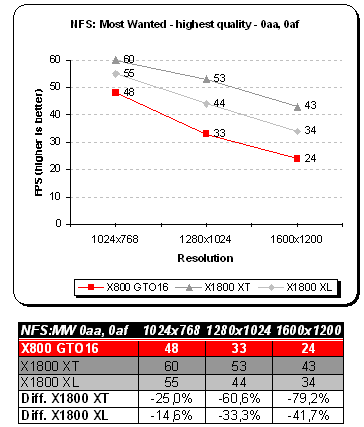
Need For Speed: Underground 2
Another DirectX 9 title with nicely shaped up graphics. The neverending title from EA Sports has brought many plenty of fun as with previous NFS series. The game uses various effects mostly found in Shader Model 2.0 such as motion blur, light / glow trails or reflections. The good thing is, all those effects are compatible when Antialiasing is enabled.
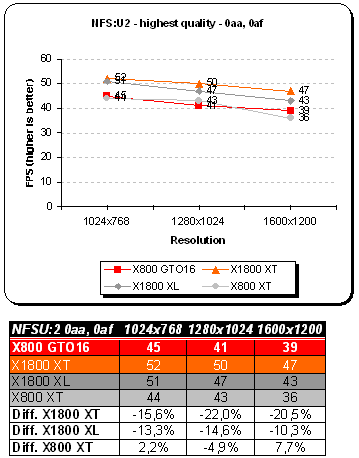
Far Cry 1.32
The company behind this game is Crytek. It was pretty much the first title which used a heavy load of PS 2.0 shaders. For our benching purposes we are using the full version with the newest 1.32 patch applied (mainly fixes SM 3.0 issues that caused graphic corruption on newer ATI hardware). Anyone who played this title will admire the draw distance, beautiful outside vegetation and incredibly spooky indoor environment. The game also features topnotch self-learning A.I and very realistic physics.
Far Cry’s CryEngine is pretty scalable, however you’d need at least DirectX 8 class hardware to enjoy the refractive water effects, ripples, real time per-pixel lighting, specular bump-mapping or volumetric effects.
The map of choice was Research. It’s a high-polygon map with both outdoor and indoor environment.
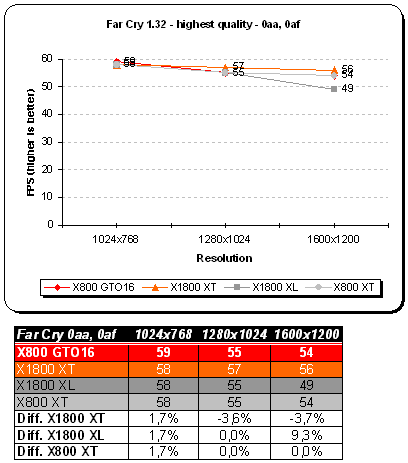
Overclocking and Conclusions
Bearing in mind PowerColor X800 GTO16 is basically a rebranded X800 XL, I already new the limitation of this card. Just as with PowerColor X800 XL 512MB. The only two differences are memory and VIVO capabilities (it does not support VIVO); on the GTO16 we have SAMSUNG K4J55323QF-GC20 (maximum rated frequency of 500 MHz), but the X800 XL 512MB model sports SAMSUNG K4J55323QF-GC16 which maxes out at 600 MHz. Go ahead and check out XL’s overclocking page for your viewing pleasure.

- GPU Temperature: Max 64,13 C
- Environment Temperature: Max 45 C
- Fan Duty Cycle: 100%
The recorded temperature is similar to that of X800 GT (61.25 C). It’s definitely not as bad as X1800 XTs core.
To make the long story short, it would’t be wise of me not to recommend this card. Everyone who is seeking a cheap upgrade yet wants decent performance should give PowerColor X800 GTO16 a considerate and detailed look. Whether you’re a gamer, enthusiast or graphics editor you should not look beyond what Tul offers with this rebranded XL video card. This board is packed with features (including dual DVI links) and great performance. At $179 USD it’s simply a steal. The only gripe I have is lack of VIVO capability — only TV out.
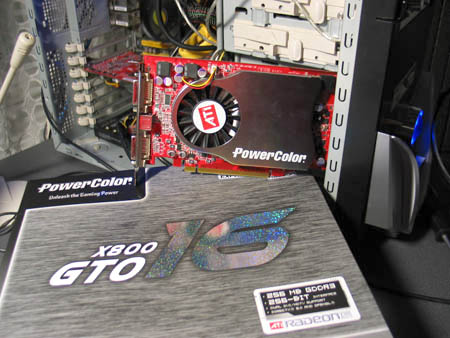
+ Great performance
+ Good memory overclock
+ Nice package
+ Dirt cheap
+ Available now
Cons:
– No VIVO capability (No ATI Rage Theater chip)
– Core could overclock higher
– Outdated bundle
For great performance, 16 pipelines and low price, PowerColor X800 GTO 16 gets the rating of 9.0 (Extremely Good) out of 10 and Bjorn3D.com Golden Bear Award.
 Bjorn3D.com Bjorn3d.com – Satisfying Your Daily Tech Cravings Since 1996
Bjorn3D.com Bjorn3d.com – Satisfying Your Daily Tech Cravings Since 1996
